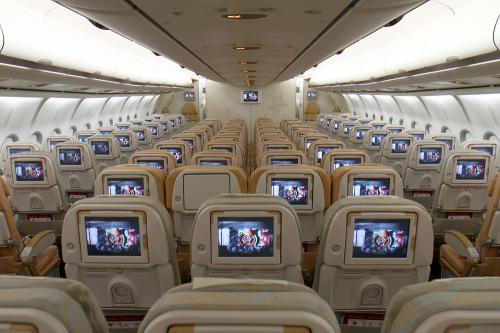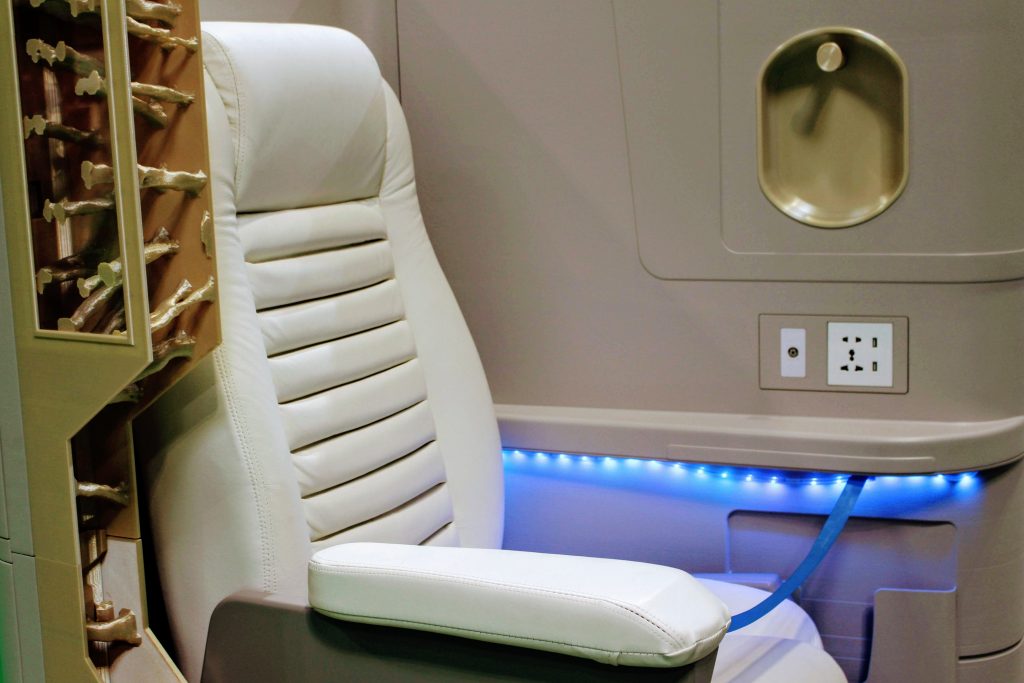Global engineering standards association SAE International has published its first specifications for additive manufacturing polymers used in the aerospace sector. In particular, the documentation refers to the process of, and material used in, Fused Filament Fabrication (FFF). They have been developed at the request of airlines which are seeking to apply 3D printing to the production of plastic cabin parts, such as monitor surrounds, spacer panels and armrests. Adopted by these parties, and suppliers seeking to fulfill aerospace requirements, the specifications will help to encourage the adoption of 3D printing.
The AMS-AM Additive Manufacturing Non-Metallic (AMS-AM-P) committee was setup specifically for their creation. Paul Jonas, Director of Technology Development & Programs at the National Institute for Aviation Research (NIAR) and AMS-AM-P Chair, says, “Both additive manufacturing users and producers will benefit from implementing AMS-AM standards.
“These standards help define a consistent set of materials and process limits that both the user and producer agree to in support of part procurement activities.
“AMS-AM standards support the promotion of knowledge, standardization of practice and advancement of commerce in the emerging AM aerospace industry.”

SAE International’s specifications for FFF
Standardization is critical to the adoption of 3D printing in manufacturing, especially where the tightly-controlled aerospace industry is concerned. In response to this requirement, SAE International has already published a wealth of material relating to metal’s use in aerospace, including standards for laser powder bed fusion (LPBF). Working with aerospace suppliers, like Norsk Titanium, the organization has also developed specifications for emerging additive manufacturing technologies. So far, the AMS-AM committee for this development has published a total of nine specifications for metal 3D printing, with plans to introduce more in the future.
The new AMS-AM-P specifications for polymers are numbered and named as AMS7100: Fused Filament Fabrication Process and AMS7101: Material for Fused Filament Fabrication. The former specifies critical controls and requirements to repeatably produce parts with Stratasys’ trademark FDM technology and other material extrusion processes. Users can use the documents to approve new machines process and material, as well as verify appropriate configuration and testing methodology. The latter specification, AMS7101, outlines technical information, production guidelines and documentation requirements for material manufacturers.
David Alexander, Director of the SAE Aerospace Standards Program, adds, “Following the success and momentum of the SAE AMS-AM Metallic Materials committee, the swift efforts of the AMS-AM-P committee helped bring these groundbreaking, aerospace-grade AMS specifications to the global stakeholder community.”

Standardization for additive manufacturing
In its standards development SAE International collaborates with industry-specific regulatory bodies, like the Federal Aviation Administration (FAA), manufacturers, suppliers, and end users, including work with fellow technical standards organization ASTM International. In 2018, ASTM announced its development of a standard practice outline for the use of powder bed fusion (PBF) technologies, and has since built up membership of its Additive Manufacturing Center of Excellence program focusing on standards.
In other news for the metal additive manufacturing industry, the Metal Powder Industries Federation (MPIF) has also released a revised edition of its powder characterization standards, originally launched in January this year.
For all of the latest additive manufacturing standardization news subscribe to our newsletter, you can also follow us on Twitter for to-the-minute updates.
Seeking a career change? Search 3D Printing Jobs now.
Featured image shows 3D printing filament. Photo via Shutterstock.



